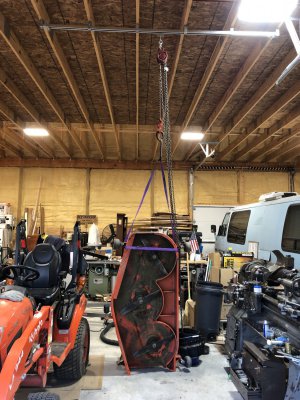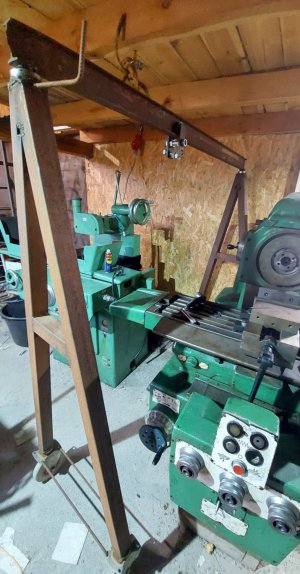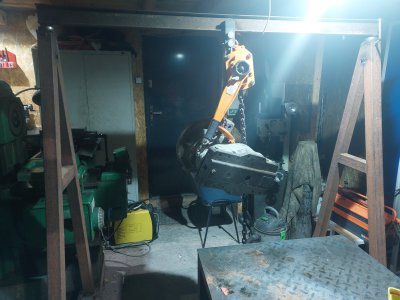- Joined
- May 4, 2019
- Messages
- 792
I have a junk Skyhook I rebuilt and use on my BP. I thought about making a mount for my BXA toolpost but like Charles said the thought of putting it on the toolpost makes me cringe.
I should have been a little more subtle in my choice of words. If that works for him, that's all that counts.I have a junk Skyhook I rebuilt and use on my BP. I thought about making a mount for my BXA toolpost but like Charles said the thought of putting it on the toolpost makes me cringe.
I made a flange that bolts to the floor, with a socket that accepts the rotating part of the crane. It sits next to my lathe and is used for handling chucks.
I think it's mounted to the carriage to make use of being able to walk the chuck back off the mount. My thought was if something fails it's going to do a lot of damage to the lathe and him.I have a junk Skyhook I rebuilt and use on my BP. I thought about making a mount for my BXA toolpost but like Charles said the thought of putting it on the toolpost makes me cringe.
Just like the title says! What are you using in your shop for lifting heavy things like dividing heads, rotary tables, mill vises, etc...?

that construction looks similar to my garage: prefab trusses of 2x10’s scabbed end to end. Ive considered a trolley system like that, but not sure how much weight I’m comfortable lifting with it. Do you have any concerns, what are you figuring is the max capacity?The Unitrac/Superstrut hoist trolley is smooth as glass and I still cannot believe how little it cost to install it.
The trusses in my shop are 2x12 on the bottom chord, but are box trusses to create a room upstairs. The T&G chipboard on the top side of those bottom truss elements is the floor of that room. That floor is rated at 40 pounds/square foot for full residential code. Had they used conventional W trusses, they would have only needed a truss every 8 feet just to support the metal roof. And the strut is mounted close to the wall of the upstairs room, where the trusses are effectively tied together stiffly by the wall materials.that construction looks similar to my garage: prefab trusses of 2x10’s scabbed end to end. Ive considered a trolley system like that, but not sure how much weight I’m comfortable lifting with it. Do you have any concerns, what are you figuring is the max capacity?
It seems like the Sky Hook attached to the compound would cause a lot of stress to the compound and cross slide.


